This is an article from “Good Old Boat”, a magazine we like a lot, and it’s written by OCH Guide Karen Sullivan. Good Old Boat and Karen have graciously allowed us to republish it for OCH members.
“To reef a course . . . you must clew it up as for furling . . . except that the clews are not hauled chock up. Lay out on the yard and haul out the earings, and knot the points as for the first reef of a topsail, seeing them clear of the topsail sheets . . .”
That is just the beginning of reefing instructions in The Seaman’s Friend, Richard Henry Dana Jr.’s 1879 treatise on practical seamanship. We have to be thankful that sails and rigs have evolved since those days. This article will focus on sail changes for Marconi-rigged boats of a size that lend themselves to being sailed solo.
EXTRA LIFELINES
Lin and Larry Pardey have for years advocated chest-high lifelines—and they work! They don’t have to be fancy, just strong—so that when you have to go forward you have the extra security of a line you can easily attach your safety harness to without having to bend down to a jackline at your feet. A stainless-steel D-ring lashed to a shroud at chest level can guide the lifeline from where it begins outside the cockpit, forward (through the D-ring) to the bow pulpit, without interfering with sail trim. When not needed, the lifeline can be coiled and attached to the D-ring with its pelican hook.
HEADSAIL MANAGEMENT
Of all the places to be when it’s rough, a bucking wet foredeck is my least favorite. What can be done to minimize time spent up there wrestling with headsails?
Strong, well-designed roller-furling systems are available today, along with specially-made genoa jibs with padded luffs that allow them to self-stow and still set properly when partially rolled up. It’s important to be able to deploy, adjust, or furl these headsails with ease. Fair leads and well-located fittings repay handsomely in reduced effort.
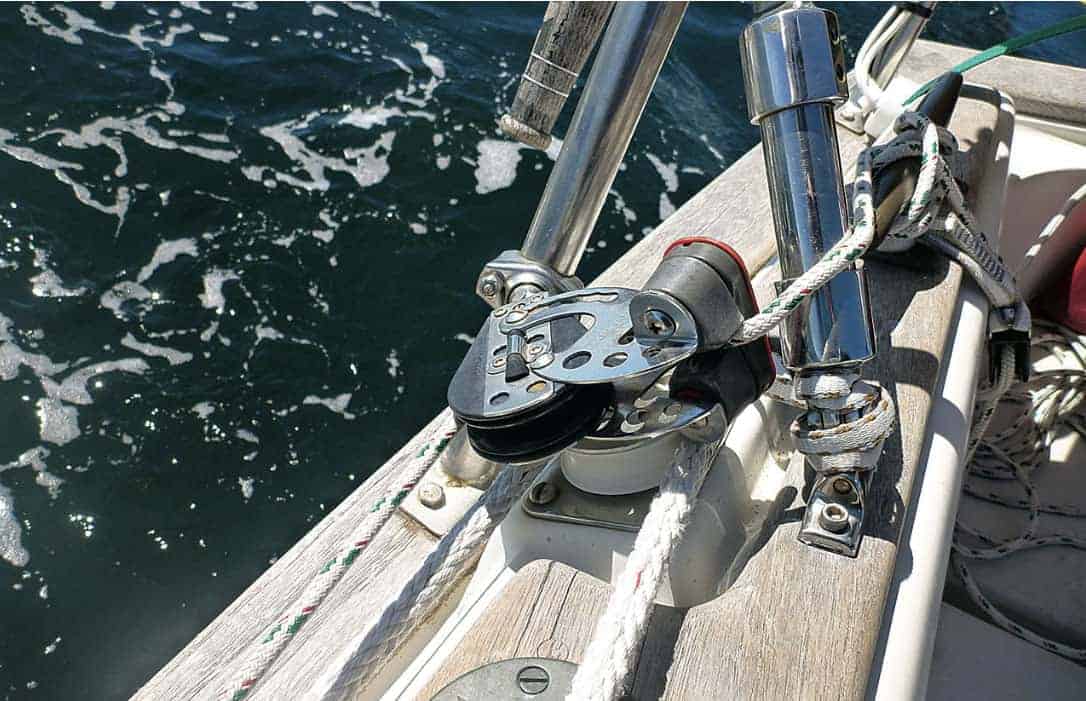
Before they came on the scene, there were hanked-on sails, and many people still prefer them. But hanks require trips to the foredeck, unless you’ve customized your rig with a downhaul.
A downhaul is a small-diameter line that’s attached to the head of a hanked-on sail and leads down the stay to a block near the tack and then aft. With a long bowsprit, a downhaul is essential. To lower the headsail after releasing the halyard, just pull in the downhaul from the more secure place you’ve led it to, such as the sidedeck near the cockpit. The beauty of a downhaul is that it eliminates the risk of losing your balance while dousing the sail from the foredeck. It also secures the sail’s head and its halyard temporarily, so by tightening the sheet you have control over all three corners of the sail. This gets the sail out of the way for, say, anchoring or docking; by stretching the sail near the lifeline, the sheet keeps the clew from washing overboard. If you’ve attached some sail ties there, you can secure the sail and it’ll be ready the next time you need it.
MAST-TRACK MAINTENANCE
Whether your mainsail is fitted with slugs in a mast groove or metal slides that go on an external track, the ability to raise or lower it easily in a seaway is a safety issue. You should not have to turn the boat directly into the wind every time you need to raise, reef, or lower the mainsail. For example, on a beam reach you should be able to ease the mainsheet to take just enough wind pressure off the sail for you to make your adjustments. This reduces flogging of the sail and pitching of the boat.
If your mainsail’s slugs or slides are subject to friction or tend to jam, examine them for defects and wear, and clean and lubricate the track. Consider installing one of the new mast-track systems that make raising and lowering the mainsail much easier.

HEAVE-TO FOR A BREATHER
A good tactic for a singlehander who needs to make decisions or sail changes is to heave-to, which will stop the boat and reduce its motion while you get things sorted out. Though every boat seems to heave-to a little differently, it’s done by putting the boat onto a tack but leaving the headsail backwinded and the helm hard over. Once you learn how your boat heaves-to, it’s amazing how much quieter things get when you do it. Heaving-to gives you time to think.
Once when I was out sailing solo in Resurrection Bay in Seward, Alaska, my engine’s raw-water impeller failed just as I was getting ready to come into harbor on a busy summer day. I hove-to, thought about what to do, then sailed downwind to the dock through crowds of fishing and tour boats. I was delighted at how precisely I could control my speed by rolling the genoa in and out like a window shade. I’m now a fan of roller furling, but with the caveat that the system must be of high quality and the headsail specifically designed for reefing as well as furling.
MAIN BOOM PREVENTER
A preventer is essential when running downwind in a seaway, as it keeps the main boom from swinging wildly around. You need a preventer on each side, with an attachment point on the boom that you can reach from the cockpit when you pull the boom amidships.
Lead your preventers forward outside the shrouds, through a hawse hole or turning block at the bow, then aft along each sidedeck to where you can control them from the cockpit. Inexpensive climbing-grade carabiners work well for clipping a preventer to the main boom, but they must be kept lubricated if they’re not stainless steel. In big seas, preventers will not only prevent accidental jibes but will also keep the boom under control while you trim the mainsail.
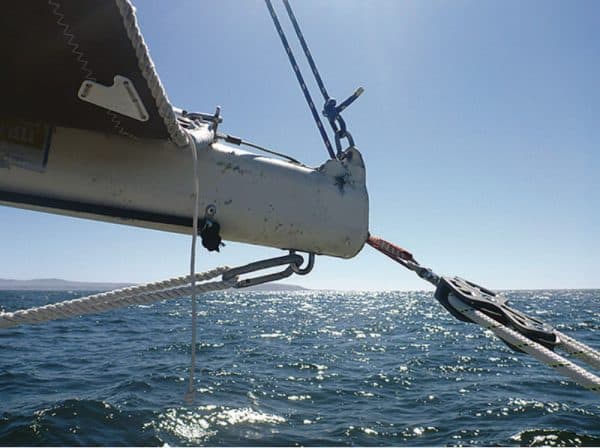
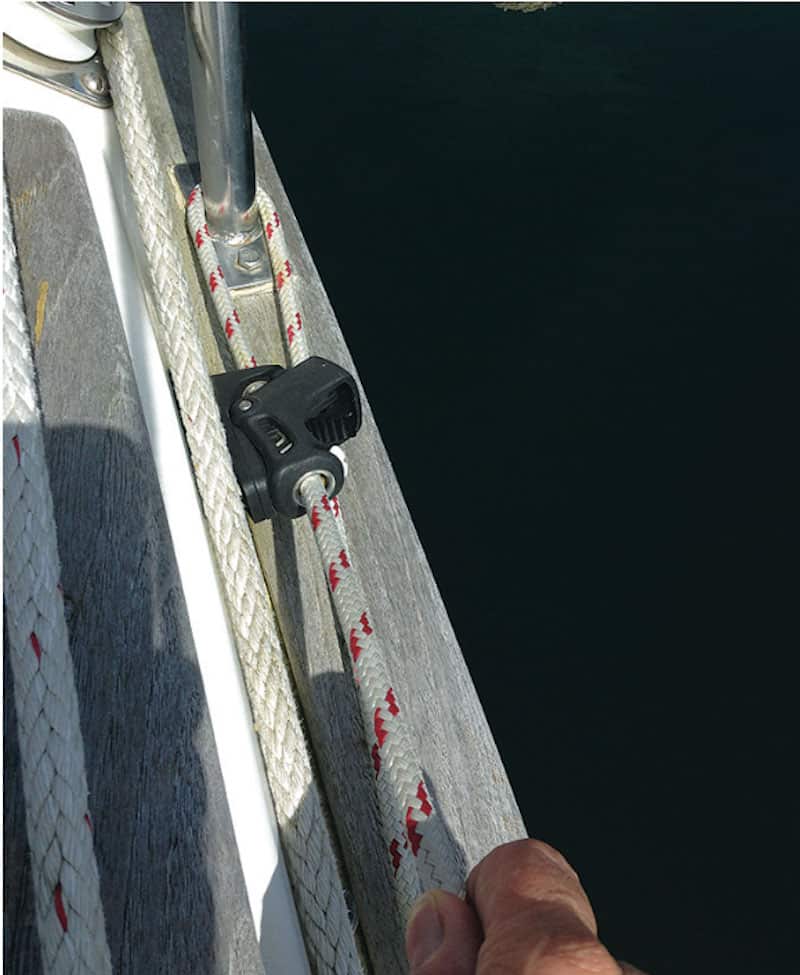
PINRAILS
Assign a separate cleat or attachment point for each halyard and other line and try to avoid having more than one line on a cleat. A nice way to accomplish this is with a pinrail lashed between the lower shrouds with belaying pins of relatively inexpensive bronze rod. Pinrails have other benefits: they lead the halyards away from the mast where they slap when it’s windy, and they provide something to lean against for balance. To prevent jams and lost halyards when lowering sails, secure the bitter ends of each of your halyards to their assigned belaying pins.
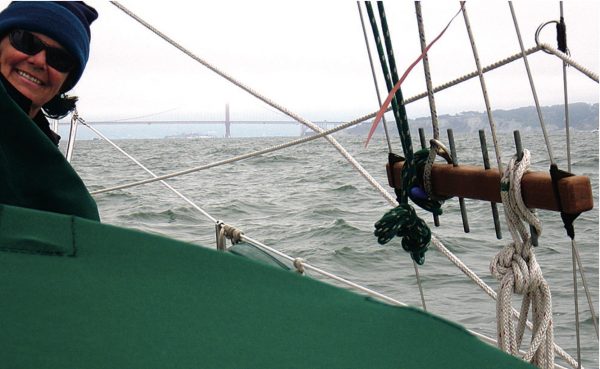
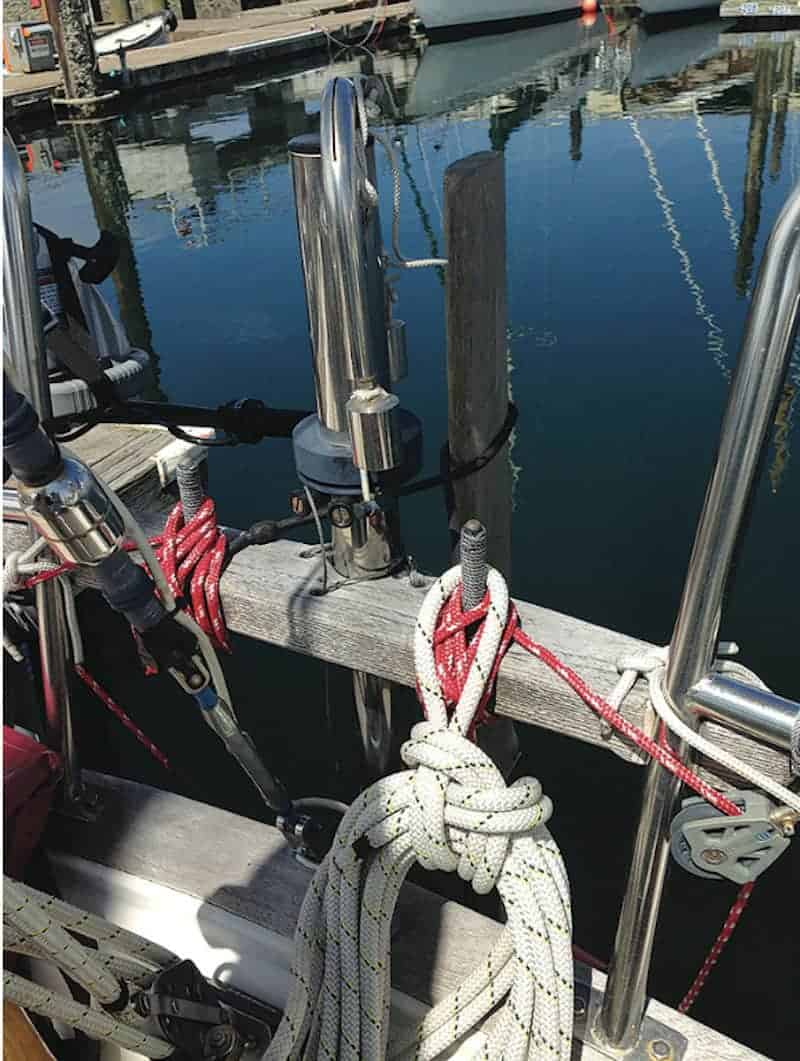
TRYSAIL TRACK
If you go offshore, it’s wise to have a separate track on he mast for your storm trysail. You can then store the trysail at the base of the mast on its own track, bagged and ready to use . But if you have to remove the mainsail from its track in order to rig the trysail, there’s a chance you might not use it.
. . . sign up to the right to get immediate access to this full post,
plus you'll get 10 of our best videos for free.
Get Free Videos& Learn More Join Now!!for Full Access Members Sign In


Drew Waterbury says:
good info. I enjoyed her videos, too.
Omak41 says:
Great ideas. Thanks!